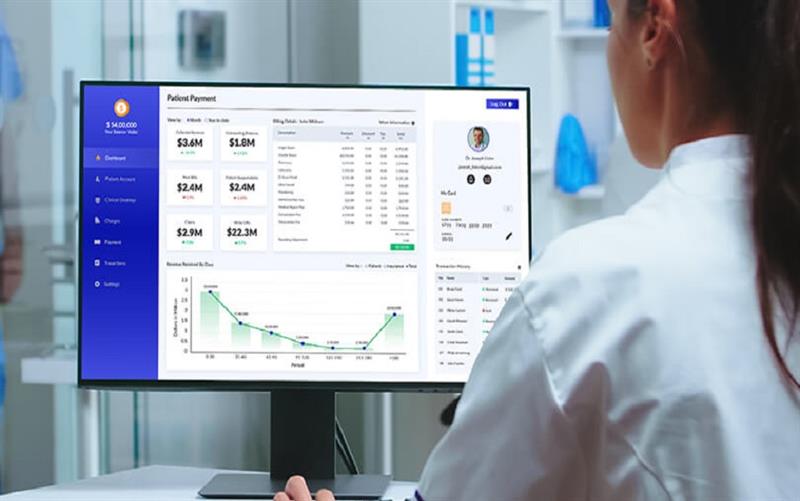
A significant step in enhancing access to care is the use of patient portals and telemedicine into healthcare delivery. These technologies promote a patient-centered approach that puts ease, openness, and involvement first in addition to making healthcare more accessible. We can build a healthcare system that is accessible to everyone, anywhere, at any time, by embracing cutting-edge medical software.
Many people still struggle to get access to high-quality healthcare in today's hectic society. Patients find it challenging to obtain timely and appropriate care due to obstacles like time limits, provider availability, and geographic proximity. However, the healthcare industry is changing due to the quick development of technology, and patient portals and medical software for telehealth are essential for enhancing access to care.
By increasing accessibility, boosting patient involvement, and expediting the delivery of care, medical software for telehealth and patient portals is transforming the healthcare industry. The goal of these technologies is to guarantee that everyone has access to high-quality treatment, regardless of location or socioeconomic background. They are not merely for convenience.
The incorporation of artificial intelligence, machine learning, and predictive analytics into these systems offers even more efficiency and customization as technology develops. Digital healthcare is the way of the future, and the opportunities are endless.
Telehealth: Redefining Virtual Care
Telehealth has revolutionized the way patients interact with healthcare providers. By leveraging technology to deliver care remotely, telehealth eliminates geographical barriers and enhances convenience. Here’s how telehealth software is improving access:
1. Anywhere, Anytime Consultations
One of the most significant advantages of telehealth is its ability to bring healthcare directly to the patient, regardless of their physical location. Before telehealth, patients often had to travel long distances to see specialists or even their general practitioners, leading to missed appointments, delayed care, and increased healthcare costs. With telehealth platforms, patients can attend virtual consultations from the comfort of their homes, whether they live in urban, rural, or remote locations.
2. Reducing Wait Times
In a traditional healthcare system, patients often experience long wait times before being seen by a doctor. These wait times can lead to frustration and anxiety, especially when dealing with health concerns that need attention sooner rather than later.
Telehealth platforms can reduce this inefficiency by offering easier scheduling options and cutting down on the time spent waiting for a consultation.
- On-demand care
- More flexible scheduling
3. Addressing Specialist Shortages
In many parts of the world, particularly in rural and underserved communities, access to medical specialists is limited. For patients who require specialized care (e.g., cardiologists, dermatologists, endocrinologists), the nearest expert may be far away, requiring hours of travel and long waiting times. For some, seeing a specialist may not be a realistic option at all.
Telehealth solves this issue by connecting patients directly with specialists through virtual visits. A patient in a rural area can consult a highly skilled professional in a large city without leaving their home. Some telehealth platforms even have networks of specialists that can be accessed through referrals or appointments.
4. Continuity of Care
A major benefit of telehealth is the ability to provide continuous care without interruption. In traditional models, especially when patients have multiple specialists or physicians involved in their care, it can be difficult to ensure that all providers are on the same page regarding the patient’s health history, ongoing treatments, and test results.
Telehealth platforms integrate seamlessly with Electronic Health Records (EHRs) and other healthcare management tools, allowing doctors to access a patient’s comprehensive health history during a consultation. This ensures that the doctor has all relevant information at hand, including:
- Previous diagnoses
- Medical records (e.g., allergies, past surgeries, chronic conditions)
- Test results and prescriptions
Patient Portals: Empowering Patients Through Digital Engagement
Patient portals are another essential component of modern medical software. These secure online platforms provide patients with access to their health information, enabling them to take a more active role in their care.
1. Transparency and Information Access
One of the core benefits of patient portals is providing patients with greater access to their own health information, fostering a sense of transparency and control over their healthcare journey. In traditional healthcare systems, medical records and test results were typically available only to healthcare providers, and patients often had to wait for appointments to discuss these results. This lack of immediate access could lead to confusion, anxiety, and delays in understanding critical health information.
2. Streamlined Communication
Effective communication between patients and their healthcare providers is critical to ensure high-quality care. Traditionally, patients often had to rely on phone calls or in-person visits to communicate with their doctors, leading to delays, misunderstandings, or miscommunications. Patient portals help streamline this process by providing secure, direct channels for communication.
- Messaging with providers
- Secure document sharing
- Appointment reminders
3. Appointment and Billing Management
Managing healthcare appointments and billing can often be confusing and time-consuming. With patient portals, both of these processes are simplified, creating a more seamless experience for patients.
- Appointment scheduling
- Billing and payments
- Insurance information
4. Health Monitoring and Reminders
Patient portals are increasingly being integrated with various digital health tools, such as wearable devices and health apps, which allow for continuous health monitoring. This integration helps patients track key health metrics in real-time and enables healthcare providers to offer more personalized care.
- Integration with wearables
- Chronic condition management\
- Automated reminders
5. Improved Patient Engagement
The overall goal of patient portals is to engage patients more deeply in their own healthcare. When patients have access to their health data, communicate directly with providers, and receive timely reminders, they are more likely to actively participate in their treatment plans and make informed decisions about their health.
- Educational resources
- Personalized careIncreased adherence to treatment plans